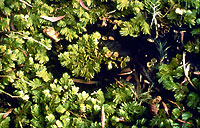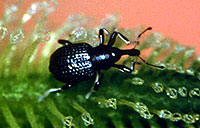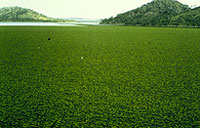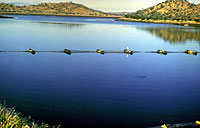| Entomology Home |

an overview
of biological control research in CSIRO Entomology
| Biological Control Home | ||
|
|
||
| Aquatic Weeds » | ||
|
|
||
|
|
||
| Biopesticides | ||
| Entomology Home | ||
| Biological Control Home > Classical biocontrol > Environmental weeds |
Salvinia, Salvinia molesta
Originating in south-eastern Brazil, salvinia (Salvinia molesta) was a serious aquatic weed in Australia, Southeast Asia, the Pacific and south, central and eastern Africa. It grows quickly to form thick mats covering lakes, slow-moving rivers and other waterways. These mats severely interfere with the use of water bodies for boating, irrigation, flood mitigation and conservation of wildlife. It took only one species of small weevil, Cyrtobagous salviniae, to clear massive infestations of Salvinia in areas like the Sepik River (Papua New Guinea), Wappa Dam and Lake Moondara (Queensland) and lagoons in Kakadu National Park (Northern Territory, Australia). Cyrtobagous was found by CSIRO Entomology scientists in Brazil - the home of the weed. In Sri Lanka, the benefit to cost ratio of using the biocontrol agent, measured in hours worked, has been estimated at 1675:1 and in rupees, dollars or any other currency 53:1. Salvinia has been controlled in at least 13 other tropical countries as a direct flow-on from this research.
|




